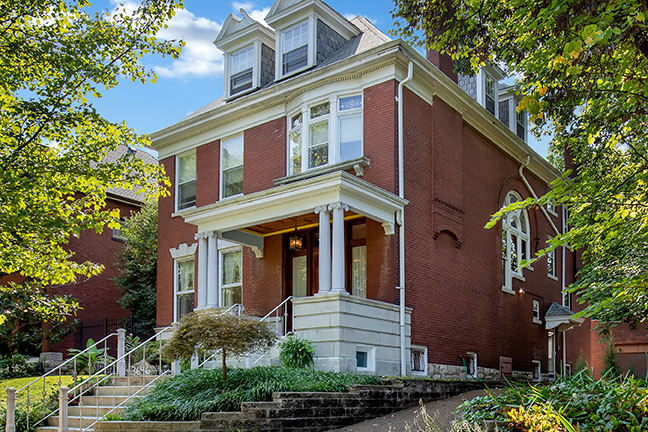
South St. Louis City

Pierre Laclede Liguest, recipient of a land grant from the King of France, and his 13-year-old scout, Auguste Chouteau, selected the site of St. Louis in 1764 as a fur trading post. Laclede and Chouteau chose the location because it was not subject to flooding and was near the confluence of the Mississippi and Missouri Rivers. Construction of a village, which Laclede named St. Louis, in honor of both Louis XV, then king of France, and Louis IX, the current king's patron saint. began the following year. Most of the early settlers were French; many were associated with the fur trade. St. Louis transferred to the Spanish in 1770, returned to France under a secret treaty with Napoleon and, following the Louisiana Purchase of 1803, became part of the United States. According to legend, on the day of transfer of the territory to the United States in 1803, St. Louis flew under three flags in one day--French, Spanish, and American.
The town gained fame in 1803 as the jumping-off point for the Louisiana Purchase Expedition of Meriwether Lewis and William Clark. After 1804, more New Englanders and other East Coast emigrants settled in St. Louis, but the population remained predominantly French until well into the 19th-Century. St. Louis incorporated as a city in 1823. During the 19th-Century, St. Louis grew into an important center of commerce and trade, attracting thousands of immigrants eager to find a new life on the edge of the frontier. St. Louis's current boundaries were established in 1876, when voters approved separation from St Louis County.
• Part of St. Louis City which was settled in 1764
• Population approximately 150,000
• St Louis Public Schools www.slps.org
Noted for:
• Missouri Botanical Garden
• Tower Grove Park
• Some notable neighborhoods include Lafayette Square, Soulard District, Shaw Neighborhood, St. Louis Hills and “The Hill” neighborhood
• Quaint pre and post war architecture
• Ted Drewes frozen custard
